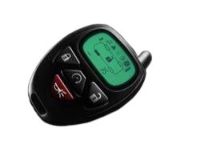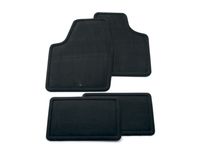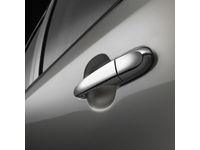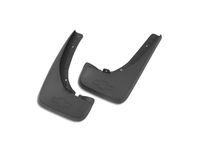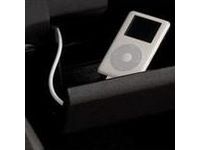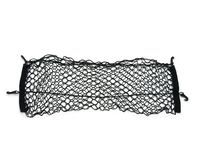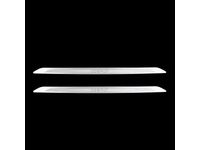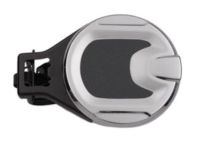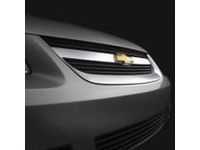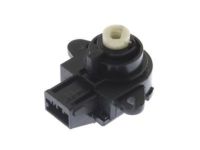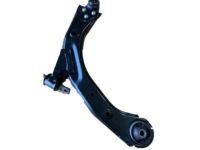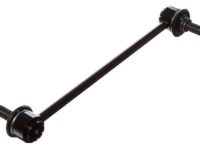Why choose GMPartsGiant
- Large Inventory
The best site to buy Chevrolet Cobalt genuine parts for years has been GMPartsGiant.com. We're the best online parts and accessory store for your Chevrolet Cobalt. GMPartsGiant.com offers a large parts and accessory inventory to cover all your vehicle's repairs. Feel free to browse through our genuine Chevrolet Cobalt parts and accessory catalog to find all your vehicle's needs.
- Fast Shipping Times
All of our Chevrolet Cobalt auto parts and accessories are expedited directly from verified dealers and backed by the manufacturer's warranty. Our experienced team ensures the orders are packed to provide quick transit times. The majority of the orders are shipped out within a couple of business days to get the parts out to you as fast as possible.
- Low Prices
Our low prices say it all. You can rest assured that you will always receive unbeatable prices on OEM Chevrolet Cobalt parts. Our giant inventory is beyond compare and has everything you need at an extraordinary value not found anywhere else. Whether you're restoring an old vehicle or upgrading the performance of your vehicle you can count on the quality of our products without hurting your bank account.
Popular Genuine Chevrolet Cobalt Parts
- Engine Parts View More >
- Front Suspension, Steering Parts View More >
- Fuel System, Exhaust, Emission System Parts View More >
- Brakes Parts View More >
- Transmission - Automatic Parts View More >
- Frames, Springs, Shocks, Bumpers Parts View More >
- Cooling System, Grille, Oil System Parts View More >
- Interior Trim, Front Seat Trim, Seat Belts Parts View More >
Shop Genuine Chevrolet Cobalt Parts with GMPartsGiant.com
The Chevrolet Cobalt is a compact car that was introduced in 2004. The sedan was available as both a coupe and sedan, as well as a sport compact version that was based on the GM Delta platform. The first generation, is the 2.0 L Turbo LNF I4, 2.0L I4, 2.2L I4, 2.4L I4, and 2.2L I4. For models from 2005 to 2006, the 2.2L Ecotec I4 version produced 145 hp (108 kW) and 155 lb. ft. (210 Nm) of torque. For models from 2007 to 2008, the 2.2L Ecotec I4 version produced 148 hp (110 kW) and 155 lb. ft. (210 Nm) of torque. For 2009-2010, the 2.2 L Ecotec LAP I4 version came with 155 hp (116 kW) and 150 lb. ft. (203 Nm). For models 2008-2010, the 2.0L Ecotec Turbo I4 version came with 260 hp (194 kW) and 260 lb. ft. (353 Nm). For the second generation, the 1.4L I4 flex-fuel, 1.8L I4 flex-fuel, and 1.5L I4 gasoline versions were available. For the first generation, the 5-speed F35 (MU3) manual, 5-speed Getrag F23 manual, and 4-speed 4T45 automatic editions were available. The second generation; the 6-speed manual, and 6-speed automatic transmissions are available. The Cobalt is Front-Wheel Drive (FWD) that could accelerate from 0 to 100 km/h (0 to 62 mph) within 10s. The first generation of the sedan was 180.3 in (4,580 mm) in length, 67.9 in (1,725 mm) in width, and 57.1 in (1,450 mm) in height. The coupe version was 180.5 in (4,585 mm) in length and 55.5 in (1,410 mm) in height, and it weighed 1,216 kg (2,681 lb.) in total. For the second generation, the model is 4,479 mm (176.3 in) in length, 1,735 mm (68.3 in) in width, and 1,514 mm (59.6 in) in height.
Despite its popularity, the Chevrolet Cobalt has been subjected to recalls due to certain defects. Common problems include suspension system issues, often characterized by power steering failure. Symptoms may include mismatched gear indicators, inability to turn off the vehicle, starting in a different gear, the steering tilt not locking, and the presence of clicking or grinding sounds while turning, hinting at potential issues with the steering column or shift cable. Another frequent problem is related to the cooling system, particularly evident when cabin temperature becomes unusually high, noises emanate from the running compressor, or the compressor clutch ceases to function, suggesting that the A/C compressor might need checking or replacing. Besides these primary concerns, attention should be paid to other key components such as door locks, headlights, and seat belts. Strange noises from the door or inability to lock might indicate a broken door lock, while dim or non-functioning headlights should prompt a replacement. Seat belts, vital for protection against sudden movements, should receive equivalent care.
OEM parts are made and tested to Chevrolet's official factory standards. They go through the strict manufacturing processes to maximize perfections. Are you in need of a high-quality yet affordable OEM Chevrolet Cobalt part, like Front End Sheet Metal, Heater, Body Moldings, Sheet Metal, Rear Compartment Hardware, Roof Hardware? Look no further. Our website boasts an extensive selection of genuine Cobalt parts, such as Transmission - Manual, all priced competitively. Plus, our top-notch customer service and speedy delivery options ensure a seamless shopping experience for you.
Chevrolet Cobalt Parts Questions & Answers
- Q: How do you remove the Ignition Lock Cylinder and Ignition Switch on Chevrolet Cobalt?A: To remove the ignition switch, disconnect the cable from the battery's negative terminal, remove the steering column covers, and turn the ignition key to the Run position. Disconnect the electrical connectors from the ignition lock cylinder and remove the two lock cylinder mounting screws to take out the ignition lock cylinder. For installation, reconnect the battery and follow the reverse steps.
- Q: How to remove the Speakers on Chevrolet Cobalt?A: To remove the center accessory trim panel and the heater/air conditioning control assembly on HHR models, remove the radio mounting screws, and pull the radio out from the dash. Disconnect the antenna cable, electrical connectors, and ground strap from the radio and remove it from the dash and spread the two locking tangs slightly.
- Q: How do you remove the control arm on Chevrolet Cobalt?A: Start by loosening the wheel lug nuts on the side where the control arm is to be removed. To begin, loosen the lug nuts of the wheel that you are disassembling and apply parking brake. You may now lift front part of your vehicle off ground using jacks then take off its wheel. Afterward, pull it out from the steering knuckle and pry apart its ball joint and then remove pinch bolt that holds balljoint on control arm. Then remove bolts holding control arm to subframe, and finally remove control arm itself. Check control arms for distortion and bushings for wear; replace necessary parts. Do not try an attempt to straighten a bent control arm. If any cracks are found or wear signs are observed in busings, take the entire assembly to your local automotive machine shop where they will have bushings replaced with new ones. As for installing control arm, perform removal procedure in reverse order while ensuring all fasteners are torqued properly. Lower vehicle, install lug nuts and tighten them appropriately according to recommended torque values; lower vehicle body after tightening lug nuts provided above. Finally, check alignment of front wheels again aligning when necessary following this exercise too as advised by some recommendations available at work places like auto repair shops near me.
- Q: How do you remove the Sway Bar Bushing,Sway Bar Kit and Sway Bar Link on Chevrolet Cobalt?A: To remove the bushings and links, start by loosening the front wheel lug nuts and raising the front of the vehicle. Support it securely on jackstands and remove the front wheels. Then, detach the sway bar links by removing the nuts that attach them to the strut coil spring assembly and the sway bar. Next, remove the bolts and nuts from the sway bar bushing retainers and pry them off if necessary. Inspect the retainer bushings for any cracks or tears and replace them if needed. If the ball studs on the links are loose or worn, replace the links. To install the links, tighten the link nuts to the proper torque specifications. Install the retainer bushings by cleaning the areas on the sway bar where they are located and lubricating the inside and outside of the new bushings with vegetable oil. Finally, install the retainers and bolts, tightening them to the specified torque. For the removal of the sway bar kit, start by removing the bushings after the clamps are unbolted. Support the transaxle with a floor jack and remove the rear transaxle mount. On certain models, the steering gear does not need to be removed. Twist the sway bar kit up and remove it through the right wheel opening. The installation process is the reverse of the removal procedure.



















































